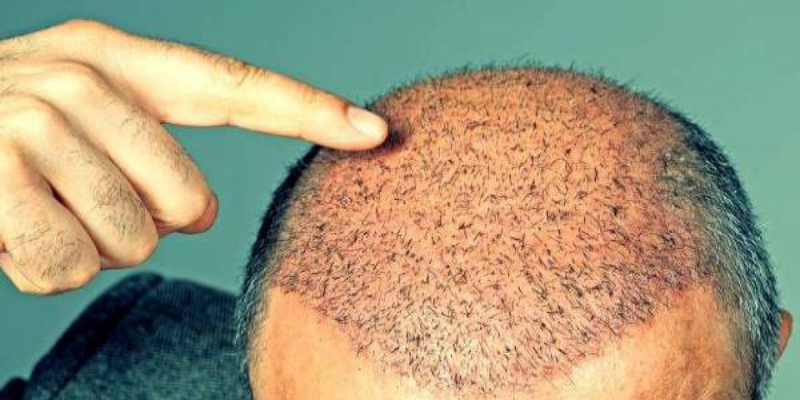Hair Plugs
Hair Plugs Hair transplantation is the process of transferring the patient’s own hair to the area where there is complete thinning or baldness, thanks to certain techniques. The first hair transplant was done in 1939, and in the following years, experts developed the ‘hair plugs’ technique.
What are Hair Plugs and How Do I Use Them?
Hair plugs are becoming a misnomer among the hair loss community in recent years.
Hair plugs a spherical collection of hairs take from the donor area of the scalp in the past especially the back or sides of the skull). Hair plugs now commonly use in reference to any area of hair taken for transplantation from a donor site.
Hair plugs are utilized in the hair transplant technique.
Do Hair Plugs Actually Work?
Do you have a dilution in your mind? Or worse, has your hair started to fall out as you get older? If this is the case, you are not alone. Many women and men around the world are facing the problem of hair loss. This can be frustrating for them. When this is the case, their social and business lives greatly affect. Hair loss is the savior at this point.
How Long Do Hair Plugs Last?
Developed hair plugs include large strands of hair transplanted by experts. Over time, experts began to use mini and micro-grafts for the patient to have natural-looking hair. After all, this condition is a common disease worldwide. In fact, the rates are so high that this area had to develop further as time went on. The demand is high and the important thing is that the patients leave happy. When we look at the rates, fifty percent of women and sixty percent of men have hair loss problems.
What’s the difference between hair plugs and hair transplant?
Hair Transplant vs. Hair Plugs
Hair plugs are a type of hair transplant, despite the fact that they appear to be two separate treatments.
Thus, hair transplants have a series of methods that use implants to fill up bald spots. A hair plug is a type of implant that consists of a circular collection of hairs.
It’s easy to get confused when there’s a lot of different language. Here’s a quick rundown of what you’ll need to know:
Hair Transplant: This is the operation in which hair transplants (or plugs) transfer from one part of the scalp (donor site) to another part of the scalp (receiver site) (recipient area).
Hair Implant: This is the hair that is gathered and transplanted, either as a strip or as individual pieces.
Implant and plug will be used alternately throughout the article as a result of a better understanding of the terminology. This is because both phrases are often used informally, however doctors and hair transplant specialists prefer to use implant or unit.
hair plug: This is a form of implant called a hair plug. The plug used to be spherical and carried one to eight hair units. The “plug” is now more generally referred to as an implant and refers to a strip or single unit.
Hair Implants Have a Long History
Since their invention in 1822, hair transplants have come a long way. Implants have shrunk in size as well as effectiveness, from scalp flaps to plugs to strips to units.
Hairline restoration methods grew more common in the United States during the twentieth century. The emergence of Japanese hair restoration methods in the 1950s played a big role in this. Sadly, it would be years before the typical hair plug phase out in favor of more natural-looking implants like strips and units.
Follicular Unit Extraction (FUE) is a more popular procedure.
Physicians, on the other hand, have continued to improve the process of unit removal and transplanting as time has passed. This has been extremely beneficial to the hair loss population, allowing patients to recover their hair with minimum scarring.
Methods of Hair Transplantation
When hair plugs have still the most popular implant, a variety of techniques have used to implant them. Let’s take a deeper look.
Graft Punch
A 4mm punch has used in this technique.
A cylinder of hair-bearing skin has extracted by the punching, which usually comprised 12 to 30 hairs. The hair cylinders have then inserted into a punched hole in the recipient region.
This resulted in an odd appearance. Even after four or five treatments, the recipient region often seems ‘pluggy.’ Despite the unnatural appearance, this hair transplant process has utilize for more than 20 years.
Mini/Micro
Both of these graft types required a tiny strip of hair to remove from the donor location. The removed portion then repair or stapled, leaving a small scar.
The quantity of hairs in each graft is the fundamental difference between the micro-graft and mini graft. The micrograft normally comprises one to four hairs, while the minigraft usually has three to eight.
Two to four minigrafting sessions may request to fill the portion for the greatest results. This is due to the fact that the slots must evenly space.
Although this technique is less pluggy, it still appears sudden and unnatural.
Hair Transplantation Methods in the Modern Era
As previously stated, the phrase “hair plugs” is archaic and has remained outside of the health industry.
Hair Plugs vs. FUT vs. FUE
The three transplantation types have one thing in common: they all employ hair removed from donor areas on the scalp. Hair plugs do not have anything in common with either FUT or FUE.
Plugs typically extract in a cylindrical pattern, as previously stated. FUT and FUE both use a strip or single unit extraction pattern, which gives the hair a more natural appearance.
In terms of whether technique is superior to hair plugs, both FUT and FUE offer clear advantages. Scarring is modest (much more so with FUE), and the best outcomes can obtain in fewer treatments. Furthermore, because both treatments are less intrusive, adverse effects may reduce.
FUE the more generally recommend method when compared FUT with FUE. This is because each unit extraction and transplantation produce minimal scarring and might look natural.
Costs, as well as the length of the treatment, can be deciding factors. FUE is substantially more expensive and requires numerous sessions, whereas a full FUT surgery can complete in 5 to 7 hours. As a result, FUT is likely the most common hair transplantation technique among patients.
Why are Hair Plugs Turkey so Popular?

Due to their effectiveness and high-quality results, hair plugs Turkey is one of the most popular hair restoration options available today. The surgeons in Turkey have highly-specialized training in hair restoration techniques, providing the highest quality of care to their patients. Most of the Turkey hair transplant clinic are committed to providing good customer service and allow patients to have a personalized experience tailored specifically to their needs throughout the entire process. With such an incredible range of benefits, it’s no wonder why hair plugs Turkey is so popular amongst those seeking hair restoration treatments.

The hair transplantation involves taking small plugs of hair from the back of your head and transplanting them into areas where hair has been lost. This method provides a natural-looking fullness but can also be completed quickly with minimal downtime. Additionally, most people can return to their daily activities immediately following the procedure. As such, it’s an ideal option for those seeking a quick yet effective solution for hair loss.
The popularity of hair plugs Turkey speaks volumes about their overall value. With this in mind, it’s no surprise that more and more people are turning to hair plugs in Turkey as their preferred method of restoring their appearance and regaining their confidence.


